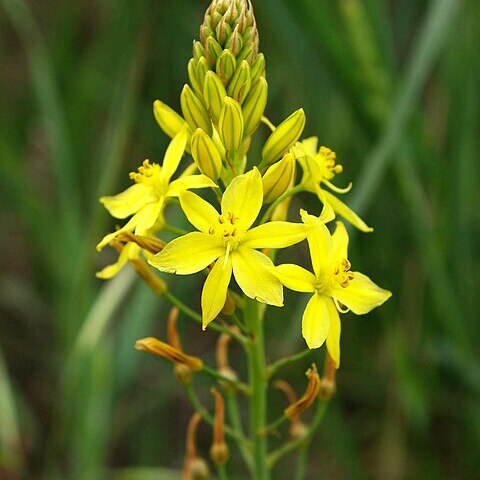A lily plant. It is a herb which keeps growing from year to year. It grows 45 cm high and spreads 30 cm across. It has a bulb shaped tuber. The leaves are onion like. There are 3-10 leaves up to 25 cm long. The flowers occur in a yellow spike. The flower spikes can be 60 cm tall and each flower 3 cm across. The fruit is about 5 mm across. It contains many black seeds.

